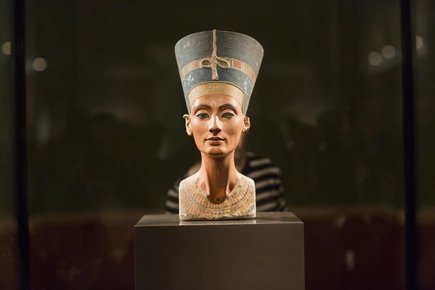
Architecture and history in the north of Berlin
From the village hall to the industrial workshop
Architecture and history? You’ll find plenty in Reinickendorf, where highlights include the Borsigwerke with their listed tower and gate. The “Hallen am Borsigturm” feature historical buildings and modern architecture. The gate of the former engineering works, which opened in the 19th century, is something you have simply got to see. Back then, the halls of the Borsigwerke primarily manufactured locomotives and were the biggest manufacturer in Europe and the second-biggest in the world during the steam era. The Borsigturm on the site, which is the most famous landmark of the Borsigwerke, was used as a water tower and office building. August Borsig also worked on the fountains at Sanssouci, the dome of the Nikolaikirche in Potsdam and the Stadtschloss in Berlin. Go right up to the end of the street called Am Borsigturm. It’s worth it.
Incidentally, the Borsigturm, built in 1922, was Berlin’s first-ever tower block, with a base area of 20 by 16 metres and a height of 65 metres.

Typical villages
Lübars and Heiligensee are typical examples of Brandenburg villages. Alt-Heiligensee is probably older than the twin settlement of Berlin and Cölln. During what was known as the Wendish Crusades against the pagan Slavs in the early 13th century, Christian farmers arrived on the peninsula between the river Havel and the lake called Heiligensee which gave the village its name, and built the first church here. Heiligensee first appeared in records in 1308, and even today, it has retained its old charm and original village character. On the village green you can see a church from the 15th century. Many of the houses around the green are now decorated with Neoclassical stucco façades. We recommend taking a look at the old blacksmith’s forge, the former village school and the fire station.
UNESCO world heritage sites
When a large housing estate is built where all the houses have whitewashed façades, it’s very likely to be dubbed the White City. That’s what happened in Berlin, when the Weiße Stadt estate was built in the New Objectivity architectural style between 1929 and 1931. Naturally, colours played an important part too, with the vibrant yellow of the window frames contrasting with the white walls. The garden director even chose the colours of the flowers on the green spaces between the buildings to bring our the brightness of the white façades. Today, the Weiße Stadt is one of the six modern building projects in Berlin that are listed as UNESCO world heritage sites.
Not as well-known as those in the centre of Berlin, but still one of the city’s most beautiful bridges is the Sechserbrücke, a red iron bridge at Tegel harbour which naturally has a history all of its own. A “Sechser” is the old slang term for a five pfennig coin, which was the toll you had to pay to cross the bridge in the early 20th century. Enjoy the view that the steel structure affords of Tegeler See, Hasselwerder island and the Reiherwerder peninsula.
The Humboldt-Bibliothek in the middle of Tegel is an oasis of tranquillity; the library building is a jewel of Post-Modern architecture. It was designed by the American architect Charles Moore, built between 1984 and1987 for the international architectural exhibition and opened in 1989. It provides an excellent refuge from the hurly-burly of Berliner Straße and the centre of Tegel.
Find out more about Berlin’s neighbourhoods with our Berlin app Going Local.
